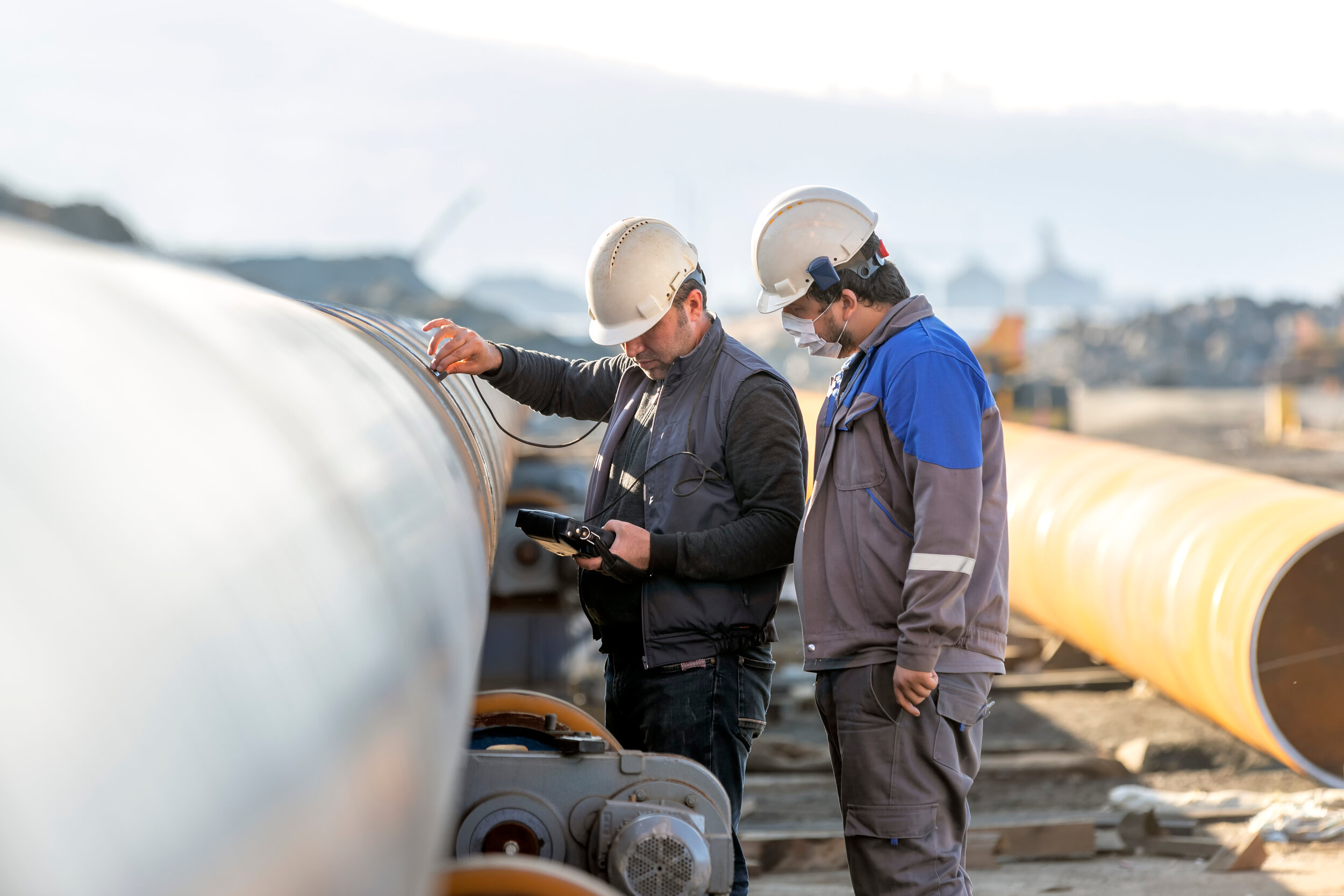Security First: Comprehensive Pipeline Welding Inspection for every single Job Phase
Security First: Comprehensive Pipeline Welding Inspection for every single Job Phase
Blog Article
Important Pipeline Welding Examination Tips for Quality Control
In the realm of pipe building, the stability of welds holds extremely important relevance to guarantee the security and efficiency of the entire system. From gas to improved petroleum items, pipes develop the lifeline of numerous sectors. Exactly how can one guarantee the high quality of these welds that attach the pipeline areas? The answer hinges on thorough assessment methods and adherence to strict quality control requirements. By recognizing the necessary pipe welding examination suggestions, specialists can prevent prospective dangers, lower costly repair services, and maintain the dependability of these critical facilities.

Importance of Welding Assessment
Welding inspection plays a critical role in guaranteeing the structural integrity and safety and security of pipe systems. By diligently analyzing welds, inspectors can identify any type of problems or blemishes that might jeopardize the integrity of the pipeline. These assessments are vital for stopping leaks, ruptures, and various other potentially devastating failures that could cause ecological damage, financial losses, and even death.
The value of welding assessment can not be overemphasized, as the top quality of welds directly impacts the total performance and long life of the pipe. Through non-destructive screening methods such as visual examination, ultrasonic testing, radiography, and magnetic bit testing, inspectors can discover problems that may not be noticeable to the nude eye. By recognizing and addressing these concerns at an early stage, welding inspection helps to make certain that pipelines satisfy sector standards and governing needs.
Eventually, welding assessment is an important element of quality control in pipeline building and construction, fixing, and maintenance (Pipeline Welding Inspection). By maintaining rigorous examination standards, industry experts can minimize threats and maintain the security and integrity of pipeline systems
Common Welding Problems
Amongst the obstacles dealt with in pipeline welding, common problems can substantially impact the architectural integrity and performance of the welded joints. Cracks in the weld can circulate over time, jeopardizing the architectural stability of the pipeline. Spotting and resolving these typical problems through thorough assessment and top quality control procedures are vital for ensuring the reliability and safety and security of pipeline welds.
Evaluation Methods for Pipes

Non-destructive testing (NDT) methods such as radiographic testing, ultrasonic screening, magnetic fragment testing, and liquid penetrant testing are generally made use of in pipe welding assessment. Aesthetic examination is additionally important find out here now in pipe welding to recognize any kind of visible flaws or stoppages. In addition, computerized examination strategies utilizing sophisticated innovations like drones and robotics are significantly being employed to boost the effectiveness and accuracy of pipe assessments.
Guaranteeing Quality Control Requirements
To maintain rigid quality control requirements in pipe construction, precise adherence to developed industry protocols and guidelines is important. Quality control in welding procedures needs a detailed approach encompassing various phases of pipe construction. Guaranteeing the high quality of welds includes making use of certified welders, appropriate welding procedures, and adherence to market standards such as those set by the American Petroleum Institute (API) and the American Society of Mechanical Designers (ASME) Examination and testing play a vital role in verifying the stability of welds, with techniques like non-destructive testing (NDT) being important for spotting prospective flaws. Furthermore, keeping detailed paperwork throughout the welding process is essential for traceability and quality control purposes. Executing a robust quality administration system that includes regular audits and reviews can additionally improve the overall high quality assurance requirements in pipeline welding. By focusing on adherence to these standards, stakeholders can make certain the reliability and safety of pipe systems for the long-term.
Avoiding Pricey Repairs
Given the vital relevance of preserving stringent top quality assurance requirements in pipe building and construction, an aggressive method to avoiding pricey repairs is you can try this out necessary. Regular maintenance checks and surveillance of ecological aspects that can impact the integrity of the pipe are likewise vital in protecting against costly fixings. By investing in preventative procedures and focusing on quality assurance at every phase of the pipe welding process, companies can decrease the threat of expensive repair work and make certain the lasting dependability of their facilities.
Conclusion
To conclude, adherence to correct welding examination strategies is crucial for ensuring the top quality and integrity of pipelines. By identifying common welding problems and executing detailed examination processes, costly repair services can be protected against, and top quality assurance criteria can be satisfied - Pipeline Welding Inspection. It is vital for pipe welders to focus on assessment procedures to maintain the safety and integrity of the infrastructure they are working with
The relevance of welding examination can not be overemphasized, as the high quality of welds straight affects the total performance and long life of the pipeline. Non-destructive screening (NDT) strategies such as radiographic testing, ultrasonic screening, magnetic fragment screening, and why not check here fluid penetrant testing are commonly used in pipeline welding examination. Aesthetic inspection is likewise crucial in pipe welding to recognize any type of noticeable flaws or interruptions. Additionally, automated examination methods using sophisticated technologies like robotics and drones are progressively being utilized to improve the efficiency and precision of pipe inspections.In conclusion, adherence to appropriate welding assessment strategies is essential for making certain the high quality and stability of pipes.
Report this page